EMEA
Filter By
Browse By
- SAP Analytics and AI
- SAP Application Development and Integration
- All SAP Application Development and Integration
- SAP ABAP
- SAP ABAP Development Tools
- SAP ABAP Test Cockpit
- SAP API Management
- SAP BAPI
- SAP Basis
- SAP BRF
- SAP Business Application Studio
- SAP CMS
- SAP Design Studio
- SAP Development Tools
- SAP DevOps
- SAP EAI
- SAP EDI
- SAP Extension Suite
- SAP Fiori
- SAP Fiori Elements
- SAP Integration Suite
- SAP Low Code Application Development
- SAP Low Code Automation
- SAP Netweaver
- SAP Release Management
- SAP UI5
- SAP Web Application Server
- SAP Web IDE
- SAP Business Process Management
- SAP Center of Excellence
- SAP CIO
- SAP Customer Experience
- SAP Data and Data Management
- All SAP Data and Data Management
- SAP BW
- SAP BW/4HANA
- SAP Crystal Reporting
- SAP Data Archiving
- SAP Data Center
- SAP Data Governance
- SAP Data Integration
- SAP Data Migration
- SAP Data Quality
- SAP Data Services
- SAP Data Strategy
- SAP Data Visualization
- SAP Data Warehouse Cloud
- SAP DMS
- SAP Document Control
- SAP EIM
- SAP ETL
- SAP ETL Tools
- SAP HANA
- SAP HANA Administration
- SAP HANA Deployment Infrastructure
- SAP HANA Studio
- SAP Master Data
- SAP Master Data Governance
- SAP MDM
- SAP Enterprise Architect
- SAP Enterprise Asset Management
- SAP ERP
- SAP Finance
- All SAP Finance
- SAP Accounting
- SAP AR AP
- SAP Asset Accounting
- SAP Billing Systems
- SAP BPC
- SAP BRIM
- SAP Cash Management
- SAP Central Finance
- SAP Controlling
- SAP COPA
- SAP Cost Center Accounting
- SAP e-invoicing
- SAP FICO
- SAP Finance Automation
- SAP Financial Closing Cockpit
- SAP Financial Consolidation
- SAP Financial Planning
- SAP FX Risk
- SAP General Ledger
- SAP Global Tax Management
- SAP Hyperion
- SAP Order to Cash
- SAP Payment Processing
- SAP Profitability Analysis
- SAP Rebate Management
- SAP S/4HANA Finance
- SAP Universal Journal
- SAP Governance Risk and Compliance
- SAP Human Capital Management
- SAP Intelligent Technologies
- SAP Platform and Technology
- All SAP Platform and Technology
- SAP Business Technology Platform
- SAP Cloud Connector
- SAP Cloud Integration Platform
- SAP Cloud Migration
- SAP Cloud Platform
- SAP Cloud Providers
- SAP Cloud Strategy
- SAP Container Platform
- SAP Digital Asset Management
- SAP Digital Integration Hub
- SAP Digital Signature
- SAP HANA Enterprise Cloud
- SAP HEC
- SAP Hyperscalers
- SAP Infrastructure
- SAP Messaging
- SAP Smart Forms
- SAP Quality and Testing
- SAP Security
- SAP Spend Management
- SAP Supply Chain Management
- All SAP Supply Chain Management
- SAP APO
- SAP Asset Management
- SAP Business Network
- SAP Digital Manufacturing Cloud
- SAP Digital Twin
- SAP EWM
- SAP IBP
- SAP Inventory Management
- SAP Label Printing
- SAP Logistics
- SAP Manufacturing
- SAP Manufacturing Automation
- SAP MES
- SAP MII
- SAP MM
- SAP MRO
- SAP MRP
- SAP Order Management
- SAP Plant Maintenance
- SAP PLM
- SAP Production Planning
- SAP S&OP
- SAP SD
- SAP SPM
- SAP Supply Chain Planning
- SAP Track and Trace
- SAP Transportation Management
- SAP System Administration
SAP EMEA is the region where the parent company of SAP resides. Founded in 1972, the company headquarters are located in Walldorf in the south of Germany.
What is SAP?
SAP stands for Systems Applications and Products in data processing. SAP has over 100,00 employees worldwide are supporting more than 440,000 customers across 180 countries. It is a global network of customers, partners, employees and thought leaders all helping the world run better and improve people’s lives. About 80% of its customers are small and midsized companies.
SAP EMEA is the region where the parent company of SAP resides. Founded in 1972, the company headquarters are located in Walldorf in the south of Germany.
What is SAP?
SAP stands for Systems Applications and Products in data processing. SAP has over 100,00 employees worldwide are supporting more than 440,000 customers across 180 countries. It is a global network of customers, partners, employees and thought leaders all helping the world run better and improve people’s lives. About 80% of its customers are small and midsized companies.
What does SAP do?
SAP develops software solutions to help organizations of all sizes and all industries run their businesses profitability, adopt continuously, and grow sustainably. The software collects and processes data on one platform, covering everything from raw material purchasing to customer satisfaction. SAP solutions can be installed on premise or used from the cloud helping companies to design and evaluate the entire value chain. They can help to seamlessly link operational data on business processes with experience data, this enables companies to better understand and respond to their customers. SAP strives to drive innovation, high performance, and employee satisfaction with these key values:
- Purpose: To help every customer with a best run business through purpose and profit.
- Vision: Help the world run better and to improve people’s lives.
- Mission: Deliver technology to help the world run better and improve people’s lives.
- Strategy: To enable enterprises to become intelligent, networked, and sustainable – bringing together the solutions.
Total revenue in 2021 was €27.84billion, including €9.4 billion from its cloud business which is expected to reach more than €22 billion by 2025. Today, SAP customers generate 87% of total global commerce. With concern about the climate crisis, the company aims to become carbon neutral in its own operations by year 2023, which is two years earlier than originally planned.
SAP offers application software for businesses such as supplier relationships, production, warehouse management, sales, customer relationships, and administrative functions. Today, SAP has more than 230 million cloud users and more than 100 solutions covering various business functions. SAP’s machine learning, Internet of Things (loT) and advanced analytics technologies help turn businesses into intelligent enterprises. SAP Business Technology Platform brings together application development, data and analytics, integration, and AI into one platform. It is the central element of SAP’s “RISE with SAP” offering.
287 results
-

CFOs Face Growing Pressure Amid Role Evolution
Published: 19/September/2022
Reading time: 5 mins
In today’s economy, CFOs are under tremendous pressure to do more with less. The pressure is only growing as executives must now contend with new compliance regulations and increased scrutiny from shareholders. Recent headlines underscore the mounting burden CFOs face as organizations consider all options to improve efficiency. To better understand the sentiment of CFOs…
-

- SAP ERP
 Premium
Premium
Achieving Business Benefits through Compelling Investments
Published: 19/September/2022
Reading time: 4 mins
As IT professionals and SAP advocates, maintaining the reliability of our existing infrastructure and application environments is job one. And our ability to improve our businesses with the goal of achieving success is just as important after we have achieved reliability. Let’s be honest, if the business critical systems aren’t reliable, we spend significant time...…
-

- SAP Digital Twin
 Premium
Premium
Building Intelligent Enterprise with AI, ML and IoT
Published: 16/September/2022
Reading time: 6 mins
According to one market research company, it’s predicted that by 2025 there will be 55.7 billion connected devices worldwide, with 75% connected to an Internet of Things (IoT) platform. How much data does that equal? The company estimates that within that timeframe, 73.1 zettabytes of data will be generated from IoT devices, with a significant…
-
-
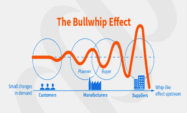
- SAP Intelligent Technologies
 Premium
Premium
Data Sharing in Supply Chain Network
Published: 15/September/2022
Reading time: 3 mins
When the pandemic made the demand for certain products skyrocket, we started hearing the term "bullwhip effect" a lot. But the bullwhip effect has existed in supply chains for decades. The fact is, the technology to address this has existed for a few years now. The issue is more rooted in trust among the players…
-
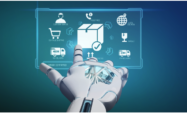
- SAP Process Automation
 Premium
Premium
Drivers for Process Automation in Supply Chain
Published: 15/September/2022
Reading time: 1 mins
Process automation technologies have increasingly evolved into strategic solutions during the last few years. While the focus in the initial years of process automation adoption was primarily on achieving cost reduction, process visibility and employee productivity have increasingly become important objectives for deploying process automation solutions. The need for supply chain resiliency and agility have…
-
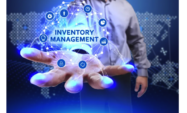
- SAP Inventory Management
 Premium
Premium
Inventory Management and Optimization Research Report
Published: 15/September/2022
Reading time: 3 mins
Inventory Management and Optimization SAPinsider will publish a benchmark report on Inventory Management and Optimization in November 2022. There could not have been a better time to conduct research focused exclusively on inventory management and optimization. Why so? Well, first of all, the first aspect, which is not surprising to any of us is the...…
-

- SAP Asset Analytics
 Premium
Premium
Integrating Process and Physical Digital Twins
Published: 15/September/2022
Reading time: 3 mins
Terms like Asset management and asset analytics have primarily been associated with monitoring the condition of equipment used on shop floors and other critical infrastructures like energy and utility. While that is one critical role asset analytics can help play, it is the ability to leverage the data generated by assets across the shop floor,…
-
-
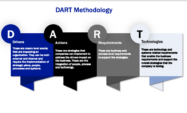
- SAP S/4HANA
 Premium
Premium
The Increasing Importance of SAPinsider DART Methodology
Published: 08/September/2022
Reading time: 2 mins
SAPinsider will be publishing Inventory Management and Optimization research reports in November 2022. If you are familiar with our research, you know that we use a proprietary framework called DART, which stands for Drivers, Action, Requirements, and Technology, to conduct our research. While we explain the methodology extensively in our reports and webinars, we believe…
-

- SAP AI
 Premium
Premium
Using AI to Eliminate Barriers to Entry
Published: 08/September/2022
Reading time: 5 mins
Advances in technology and computing, like AI algorithms, are lowering barriers to entry across industries. Barriers to Entry, in simple terms, mean that the investment and resources that a new player needs to enter a market are high enough to keep the majority of prospects out. So what aspects have led to significant lowering or,…
-
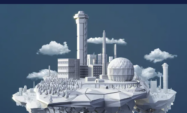
- SAP Analytics
 Premium
Premium
SAP Industry Cloud – Need of The Hour?
Published: 08/September/2022
Reading time: 4 mins
SAP Industry Cloud is a portfolio of cloud-based solutions designed specifically for specific industries, by SAP and SAP partners, on the SAP BTP platform. That is the simple explanation but should help you see how it comes into play after the narrative described in the last paragraph. Companies in specific industries can save a lot…
Featured Experts
-

Anastasios Kyriakopoulos
SAP S/4HANA Implementation
Director of Solutions Architects APAC at Tricentis
-

Robert Holland
Vice President and Research Director, SAPinsider
-

Michael Rovner
Editorial Director & Publisher, SAPinsider
Become a Member
Unlimited access to thousands of resources for SAP-specific expertise that can only be found here.
Upcoming Events
-
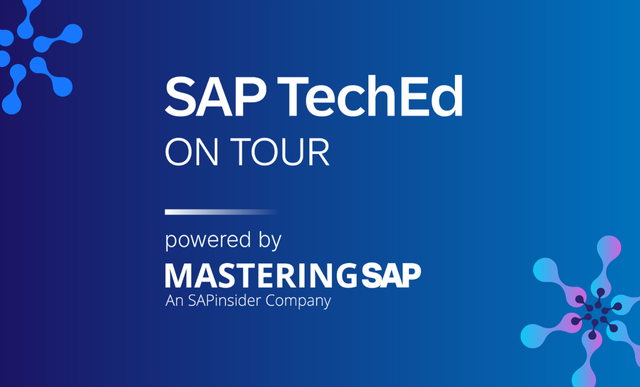
SAP TechEd on Tour, powered by Mastering SAP
November 12 - 14, 2025
Sydney, New South Wales
Australia
View Event
Related Vendors
Your request has been successfully sent
